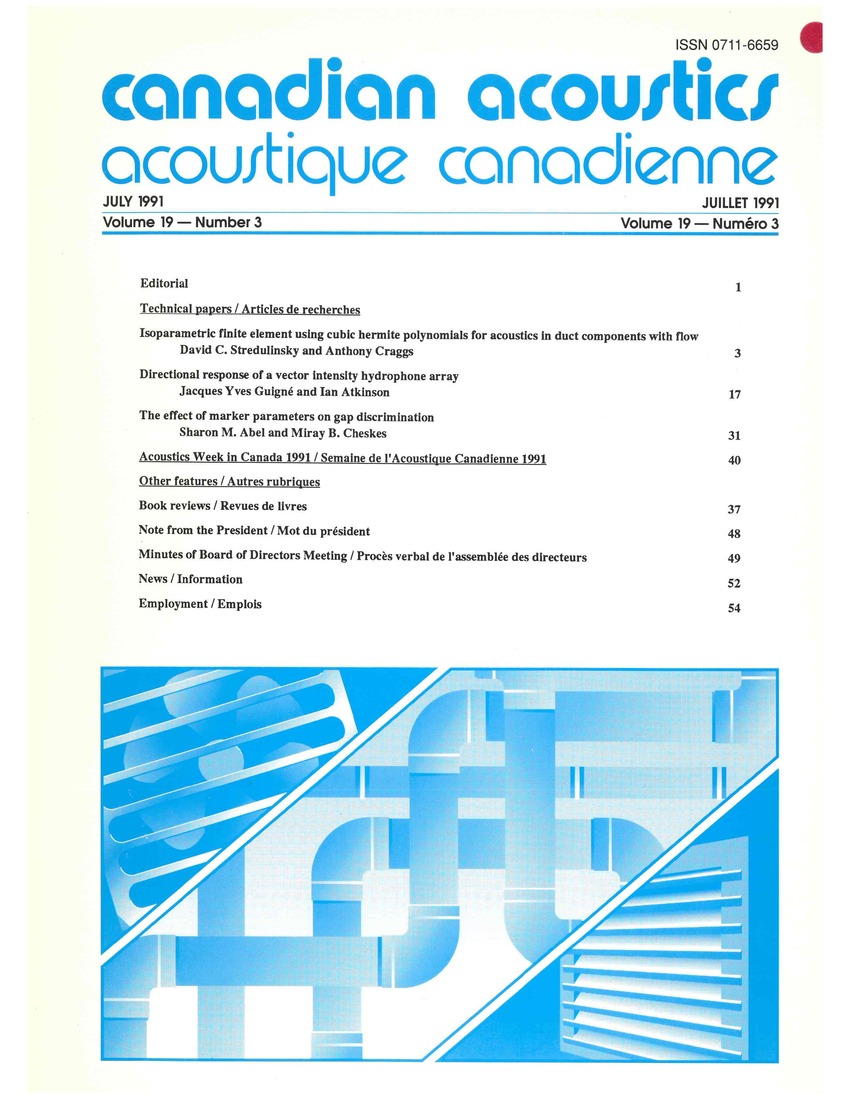The effect of marker parameters on gap discrimination
Keywords:
hearing, marker rise, marker decay, marker parameters, gap discrimination, normal-hearing listeners, marker frequency, 500 Hz, 4000 Hz, 5 to 100 msAbstract
A preliminary investigation was conducted of the effects on gap discrimination of variation in marker rise/decay, in combination with other marker parameters. Three well-practised normal-hearing listeners participated. In each, the just noticeable increment (?t) was measured for silent gaps of 10, 20 and 100 ms, within the context of 16 different marker conditions. These reflected variations in bandwidth (octave and 1/3 octave), centre frequency (500 and 4000 Hz) intensity (75 and 85 dB SPL) and rise/decay time (5, 25 and 50 ms). The results showed that ?t increased significantly with an increase in rise/decay time. Marker intensity and bandwidth had no effect. Discrimination improved with an increase in marker frequency only for the longest gap, given the shortest rise/decayAdditional Files
Published
How to Cite
Issue
Section
License
Author Licensing Addendum
This Licensing Addendum ("Addendum") is entered into between the undersigned Author(s) and Canadian Acoustics journal published by the Canadian Acoustical Association (hereinafter referred to as the "Publisher"). The Author(s) and the Publisher agree as follows:
-
Retained Rights: The Author(s) retain(s) the following rights:
- The right to reproduce, distribute, and publicly display the Work on the Author's personal website or the website of the Author's institution.
- The right to use the Work in the Author's teaching activities and presentations.
- The right to include the Work in a compilation for the Author's personal use, not for sale.
-
Grant of License: The Author(s) grant(s) to the Publisher a worldwide exclusive license to publish, reproduce, distribute, and display the Work in Canadian Acoustics and any other formats and media deemed appropriate by the Publisher.
-
Attribution: The Publisher agrees to include proper attribution to the Author(s) in all publications and reproductions of the Work.
-
No Conflict: This Addendum is intended to be in harmony with, and not in conflict with, the terms and conditions of the original agreement entered into between the Author(s) and the Publisher.
-
Copyright Clause: Copyright on articles is held by the Author(s). The corresponding Author has the right to grant on behalf of all Authors and does grant on behalf of all Authors, a worldwide exclusive license to the Publisher and its licensees in perpetuity, in all forms, formats, and media (whether known now or created in the future), including but not limited to the rights to publish, reproduce, distribute, display, store, translate, create adaptations, reprints, include within collections, and create summaries, extracts, and/or abstracts of the Contribution.


